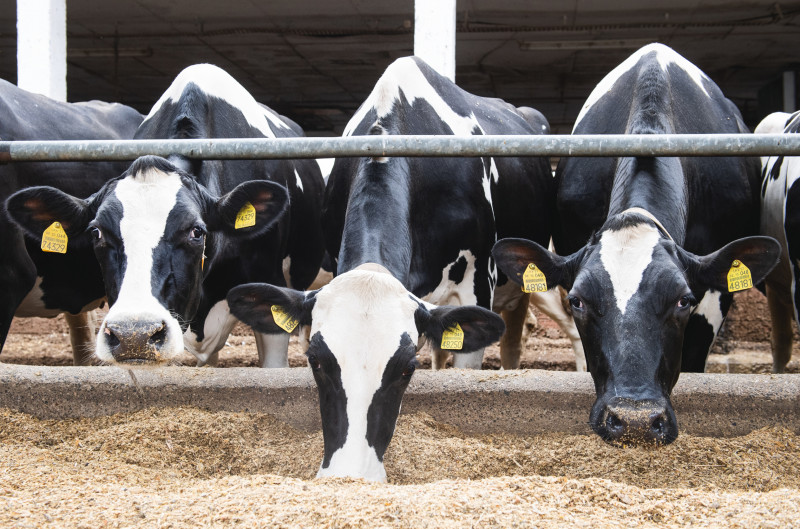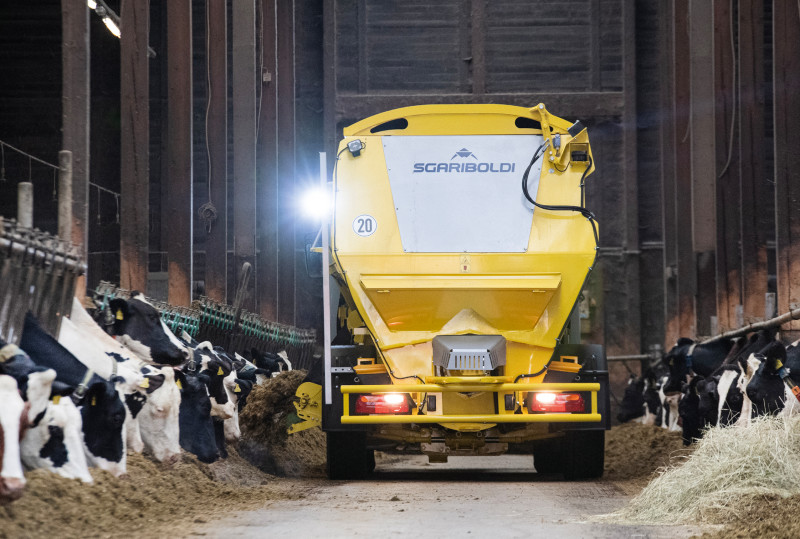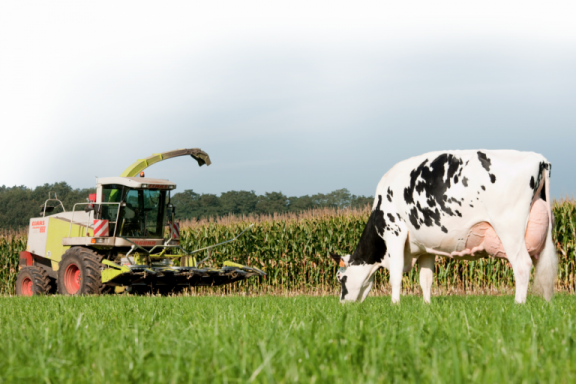
The key to efficient milk production is the quality of the forages. Only with high digestible, energy rich forages can the best results be achieved. This is where the biggest differences are often found between individual farms. One of the most important forage components worldwide is corn and to help you prepare during these quiet winter months for the upcoming corn growing season we talked with an expert. Martin Cazot is the marketing manager for corn with the Limagrain (LG) cooperative in Europe, Turkey and Russia and gave us several useful tips.
JACQUES BERNARD CHRISTINE MASSFELLER
Please briefly explain the activities of Limagrain.
‘Limagrain is a French cooperative which specialises in the breeding and development of field crops and vegetables. We try to breed varieties for different regions and production conditions, which is why we invest about fifteen percent of our turnover into research and development. This way we can guarantee that the genetic portfolio and the selection programs are always up to date.’
How should we picture the research and development in this field?
‘I will relate my answer to corn. We want to produce corn hybrids that meet the differing criteria of our customers. To do this we need to first carefully examine their demands and then develop the hybrids to meet those demands. In order for a new corn hybrid to officially recognized by LG and marketed it requires a lot of time and it needs to meet several criteria. For example, a new variety must differentiate itself from all other existing varieties, must be homozygous and cannot show any change over time. If these conditions are fulfilled, then the corn hybrid can go to market, where it will be available for an average of five to six years. Some even manage to stay on the market for up to 15 years. At the same time, it is important to note that breeding progress is about 0.1 tonne of yield per hectare per year. That means that a variety which is ten years old has an average of one tonne less yield, though it may remain of interest for various regions for other reasons.’
What is the challenge in the development of corn hybrids?
‘In the research conducted by LG we must clearly differentiate between grain corn and silage corn. The challenge for grain corn is to achieve a higher proportion of grain and a plant that remains strong until the late fall, which is why these varieties have a significantly higher proportion of lignin, which is a big drawback for feeding in the form of silage corn because of the indigestibility of lignen. At the end of the 1970’s, Limagrain hired a zoo technologist for the first time to firmly embed animal feeding into the operational philosophy. Since then, feeding has been an integral part of research and development and employees regularly receive further training in this area.’
Let us concentrate on the dairy cow: which aspects are particularly important?
‘We want to offer the best possible silage corn for every ration. As such, it is not only the region and production conditions that are very important in the development and selection of varieties, but also how the variety will be fed afterwards. If a farm feeds a ration with 70% corn silage, a variety with higher fibre digestibility and a higher proportion of bypass starch is recommended to reduce the risk of acidosis. On the other hand, a farm that feeds a lower proportion of corn silage may be more interested in varieties with higher starch values and a higher proportion of rumen available starch. A deciding factor in both situations is to have the best possible yield so that the farm can reduce purchased feed.’
As a farmer, how would I go about making the best possible decision and what is the return on investment that I could expect?
‘In the western European countries, sales and consulting is mostly done by third party partners that can rely on extensive informational material and experience. We are always available when needed and are able to send an expert to a certain location. Especially for ruminants we have developed an internal company section, the LGAN (LG Animal Nutrition). This focuses on the collection of varieties with good digestibility and high energy density. These varieties would be contracted to be economically studied in seven different countries by official institutions. Through extensive studies that look at a range of factors from planting to feeding, it has been established that just through an optimized variety selection, production can be increased from 0.5 to 3 kg milk per cow per day.’
Those are enormous numbers! The great thing about it is that farms have an opportunity every year to improve their forages, whereby several years and generations are needed for genetic improvements within their herd…’
‘That is exactly the point. Milk production is painstakingly selected for in cow breeding, whereby the optimization of forage planning allows for much faster financial results. At LG we want to motivate farmers to spend a few days of the year closely looking at topics like variety selection or improved harvest organisation. That would have a large positive impact on many farms all year round.’
‘Milk production is painstakingly selected for in cow breeding, whereby the optimization of forage planning allows for much faster financial results.’
On that note, what role does the organization during harvest play?
‘Current numbers from studies show that only 45% of farmers in France achieve the optimal harvest time for corn silage. In short, this means that more than half are harvesting either too early or too late, with each having its own disadvantages.’
So what is the optimal harvest time point?
‘For us, the optimal harvest time for corn silage is when the dry matter is between 32 and 35%. If the value is under 32%, then optimal maturity has not been achieved and there is missing starch and through water loss in storage soluble sugars are lost. On the other hand, if dry matter is too high there are often problems with kernel processing as the grain is starting to get hard and the equipment is not properly adjusted. Another negative aspect is problems with packing and the related consequences of heating and spoilage.’
How does a farmer manage to meet the optimal harvest time better in the future?
‘There are several effective methods. We offer two technical methods to better help our clients achieve the optimal time point. One is through the “LGlab,” a classical infrared lab analysis for dry matter. We have also developed a tool with “LG agrility.harvest” that can predict the harvest point through analysis of satellite images early and quite accurately.’ This system is now operating reliably in several countries. The customers give the information and location of their corn fields and receive regular updates as of August 1st as to what the optimal harvest time will be. The longer the farms know in advance what the harvest time will be, the better they will be able to plan the harvest with their employees or custom operators. It can also be helpful when harvesting over a longer period of time to chop the fields according to their maturity and achieve more consistency over the complete feeding year.’
That sounds exciting! Are there any other technological innovations?
‘In addition to “LG agrility.harvest’ we have the “LG agrility.yield,’ which predicts expected yield in addition to the harvest time based on satellite images. We are able to predict the wet matter yield to within one tonne +/- per hectare. That offers clients early planning reliability in terms of their harvest yield and are then able to decide whether they need to purchase more forage or maybe even have some to sell.’
What further innovations are currently in the starting blocks?
‘We are always researching and further developing. Since 1997, LG has produced an innovation every three to four years which have propelled the business forward. In this, we are trying to achieve equal progress on three pillars: breeding and genetics, service ability and further internal training. Agriculture is currently developing faster than ever in every aspect. The acceptance by society is another thing that is evolving, the farm operational structures are changing and there are always more regulations, for example in terms of methane production or fertilizer use. And then there is also climate change which is forcing us to rethink as in the future we will need crops that are better able to handle the changing stress factors while continuing to yield well. One thing that is certain is that the challenges and the possibilities are more exciting now than they have ever been.’ l


